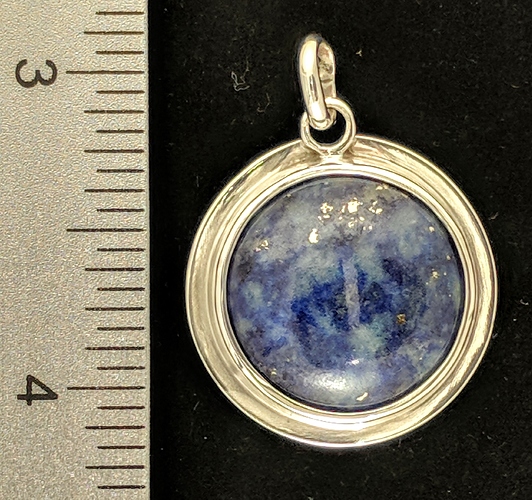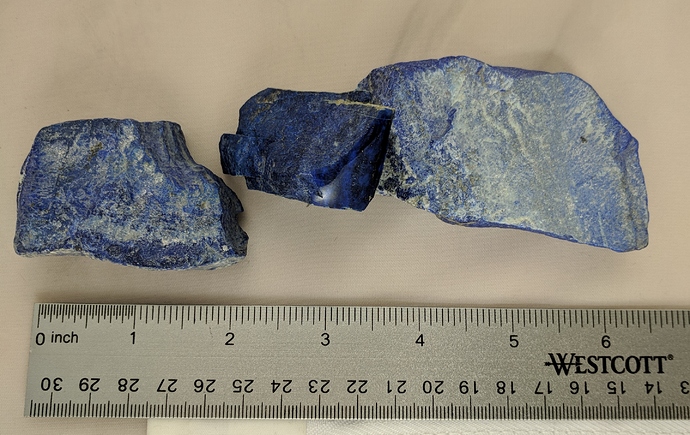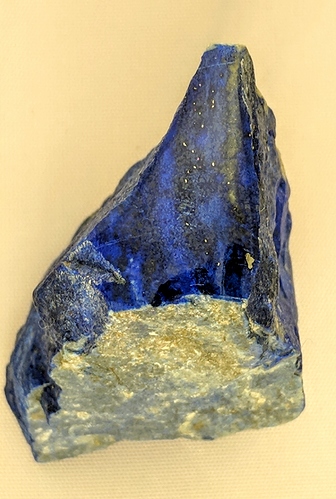I find myself bezel setting a lot of softer stones right now, turquoise and lapis especially. My bezels are fairly heavy walled and I move them with small brass pushers and a hammer. I secure the bezel in therma-loc plastic and have shaped my pushers to follow the shape of the surface that they are pushing and re-polish them often. I still have some clean up to do close to the stone. I use small edge safe files and abrasive wheels. This works fine on harder stones, but I still fear that I might damage the softer stones that I am currently setting. Are there abrasive wheels, discs or other products that any of you have experience with that will allow me to clean up my bezel, but not damage the softer stones? I know that some of you will suggest gravers and bright cutting and I am working on it, but I still haven’t figured out how to reliably use a graver. I also am not sure that I want that type of finish. Any help is appreciated and Merry Christmas or Happy Holidays to all. Thanks…Rob
My experience with bezels is minimal. I just don’t work with that many stones. But the few I have I found using a small, hard felt wheel on the flex shaft to do what I needed to do to clean up the tool marks on the bezel. And if the wheel was too thick I could sculpt it a bit by running it along the side of a file to thin the wheel.
Don
Sent from my Verizon 4G LTE Droid
Robert!
The ‘only’ tool that is used, is the Onglette Graver #2. This graver is
slanted to cut only on the Right-Side, nowhere else.! It does take ‘a few
attempts’ to get used to this remarkable blade. In my setting classes, this
topic is carefully explored. There is a need to use #600, #800 then the
#1,000 grit polishing paper to get the Onglette into a pristine cutting
condition. I could even travel to you to show how this is done!
After the “Bright-Cutting”, I’d use a 'Pumice Wheel #180 grit" to smooth
over the top & outside rim of the bezel. This pumice wheel removes any file
marks, then all you have to do is to polish lightly!
*Gerry Lewy *
Toronto.
- (905) 886-5961 *
Pumice wheels and the dust they create will/can scratch turquoise if it gets on it. If you are not comfortable with gravers then avoid them too. Steel chasing tools, burnishers, felt wheels, seems your best choice. Even rouge on felt will affect turquoise if it is one of the softer ones
Hi Rob,
My thoughts are like your brother’s. A suitably narrowed felt wheel. What to put on it?? you need to look up the hardness of the abrasive in the polishing compound you may use. It will need to be softer than the stone in question That way youd be safe.
Look up polishing perspex an ICE acrylic clear plastic. Polishes for plastics are quite safe on soft stones but will clean up the bezels you use.
Ted.
Typo Error, the plastic is by ICI! Uk’s leading plastic’s maker.
I take no chances with polishing the setting around soft stones. I tear off
little pieces of masking tape and cover the stone right to the bezel so
that the entire stone is protected with layers of tape. When everything is
ready it is easy to lift off the covering, and I never seem to have any
residue. Of course, most of my work is done with larger semi-precious
stones, not “tiny” diamonds etc.
Noralie Katsu
I would like to refine my question a bit. I found a lot of discussion about this topic 10 - 15 years ago and am looking for an update. With the exception of using a graver, which I hope to figure out soon, I do most of what was suggested now. I am especially interested in the “heatless” wheels that are shown in catalogs and those that say that they won’t damage soft stones. If there are some that really work, I would be interested in hearing about them. My usual approach, and it works fine on most harder stones, is to make sure that the top and side of the bezel is finished to start with and then do as little damage as needed to move the bezel. After that I use safe edge files and sculpted abrasive wheels to get close. I plan to try adding a plastic shield to the stone side of an abrasive wheel to see what this will do to protect the stone. Gerry, can I buy an onglette #2 already prepared for this purpose. I am left handed and would probably go in a clockwise direction. I have not been able to find onglettes that are sharpened only on one side. I realize that I really just need to figure how to make and use them, but in the interim, I would buy one. Thanks again…Rob
Rob,
I have some really bad news! No gravers are made or refined as mine. The graver-makers leave that up to you.;( I can reshape them specially for a left-handed Setter-Jeweller. Contact me off-line for further details!
“ gerrylewy18@gmail.com” has
Gerry! On my Teaching iPhone!
This is about as good a bezel as I can do right now with a soft stone. This one happens to be Lapis…Rob
Hi Rob,
That’ a nice piece, but I think your work deserves some lapis sans calcite, unless that was a conscious design choice. I don’t have a lot of that on hand right now, maybe after the summer shows if you are interested.
royjohn
Why not try Zam? It is formulated for silver and turquoise.
I do use ZAM, I just forgot to mention it. I guess that I am just looking for ways to polish soft stones that I don’t already know or use. Thanks…Rob
Regarding my Lapis source. When our Dad died, he left hundreds of pounds of semi precious rock rough and slabs that he had collected for over thirty years. He never really did much cutting and polishing. When Mom died, it was a part of my inheritance. I didn’t do much lapidary until then, but decided that I better get to it. Since then I have learned a lot about cutting and polishing, but many times I have no idea what I am working on other than that I like the color, how it cuts and what potential it has in the jewelry that I make. Whatever you can tell me about this Lapis is appreciated. Thanks…Rob
Hi Rob,
The piece you pictured is very nice, and beauty is in the eye of the beholder. That said,
better lapis has no visible calcite (white) in it. It may or may not have flecks of gold
(pyrite) in it… I believe some people like the gold flecks and some don’t…I myself
like it. The deeper and more ultramarine the blue is, the better the grade of lapis.
Lapis is often dyed to deepen the blue, but usually you can see the dye in veins
in the structure and acetone or alcohol will make it come off on a rag.
I have an interesting slab of lapis here that I bought last summer. It is half blue and
the other half has white in it, but if you turn it over, the white half is pure blue on the
other side. I think that as long as it is face up deep blue, the white doesn’t devalue it.
If I find out that’s not so, I’ll just put it in a closed bezel, so you can’t see the calcite.
Anyway, I think I’ll try to get some more from the guy who had this slab at the July show
in Franklin, NC. I think I can sell the cabs…
Best,
Royjohn
It is what it is; for me a reminder of our father. The piece is a gift for a daughter in-law and others like it will be for sisters and nieces. We lived with this material in our family home for years. I have a son who works in dangerous places. A few years ago he bought a small amount of Lapis as a gift for me, I think in Afghanistan. It has the qualities that you describe. Once I figure out what I am doing, I will try cutting and polishing it. Following should be a couple pictures with one small area polished to see what it will look like.
Hi Rob,
Yes, that piece in the middle is the really deep blue stuff without any white to speak of.
It could be that the white devaluing it is because it makes it appear just like sodalite,
which is a much more common, cheaper stone. That said, one of the first rings I made
was set with a sodalite. It looks nice and has a lot of value for me. The nice thing about
working in stones is that it is going to take someone’s fancy. I’ve done some pottery,
and with each kiln load you get better and after a while the stuff you made last season
just looks terrible to you, but if you offer it to people, there is always someone who thinks
it is great.
Best Regards,
Royjohn
While sold as Lapis, it could be Sodalite, although it has what appear to be pyrite flecks. It is a lot denser than the Lapis that I have been cutting and polishes nicely. Some day I will get someone who knows what they are looking at to go through the rough that I have and tell me what it is. Thanks…Rob
You can test a pumice wheel on the back of one of your stones to see if it will damage the finish.
I have and it does damage the stone, but my wheels are fairly aggressive silicon carbide wheels. If anyone can suggest a less aggressive wheel that will still clean up small dings and dents from the pusher while not damaging soft stones, I would appreciate it. Thanks…Rob


